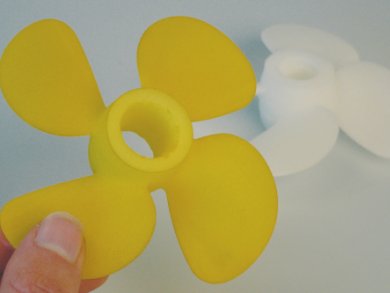CO2 is more than just a waste product: Researchers at the Fraunhofer Institute for Environmental, Safety and Energy Technology, Germany, are testing how carbon dioxide can impregnate plastics. They have found that supercritical CO2 can be introduced into polymers, or act as a carrier for dyes, additives, medical compounds and other substances.
Supercritical CO2 dissolves powered pigment at 200 bar and 90 °C. This then diffuses, with the gas, into the plastic. The process only takes a few minutes. The researchers have impregnated polycarbonate with antibacterial nanoparticles and silica with the anti-inflammatory drug flurbiprofen. The color, additive or active ingredient is introduced into layers near the surface at temperatures below the material’s melting point, so plastics may be molded prior to dyeing.
The method allows customization of high-value plastic components in an environmentally friendly process as CO2 is non-flammable, non-toxic and inexpensive.




